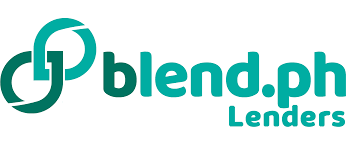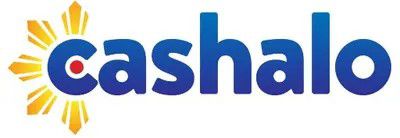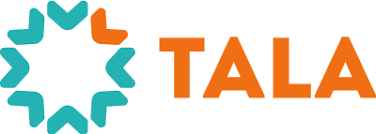Loan Apps for Students
In today’s digital age, technology reshapes many facets of life, and financial technology (fintech) emerges as a beacon for students. Particularly in the Philippines, where students often need money for college expenses, fintech introduces a promising solution: student-focused loan platforms. These platforms, like the one offered by Bukas Finance Corp, stand out as the best loan options for students due to their low interest rates and fast approval processes.
Explore & Apply for the Right Loan Today
| Binixo – Fast & Convenient Loan Matching Platform in the Philippines | Apply |
| Cash-Express – Online Fast Cash Loan Service | Apply |
| Kviku – Instant Online Loan with 0% Interest for New Clients | Apply |
| Finami – Fast & Easy Online Loans 24/7 | Apply |
| LoanOnline.ph – Compare Loans in Just 2 Minutes | Apply |
| Digido – Instant Online Loans up to ₱25,000 (0% Interest for First Loan) | Apply |
| Finloo – Find the Best Online Loan in Just 5 Minutes | Apply |
| CashSpace – Quick Online Loans in the Philippines (24/7) | Apply |
Navigating student life in the Philippine context can be challenging, but these apps simplify the quest for financial aid. Whether you’re a best student seeking the best option to complete their education or a family member keen on exploring favorable terms, understanding these digital financial tools becomes paramount. The Bukas Finance Corp app, available on Google Playstore and even at 7-eleven stores, offers fixed interest loans online with favorable terms.
This article aims to guide students in the Philippines on how to find a loan that suits their needs. By exploring the various funding platforms available, we empower students and their families to make informed choices, ensuring that finances don’t hinder academic dreams.
Where to Apply for Student Loans

In the Philippines, numerous online borrowing platforms, such as Digido, provide hassle-free options for students to apply for cash loans. These platforms, operating through user-friendly apps or websites, offer the convenience of availing loans without the need for extensive certificates. With competitive interest rates per annum, students can easily borrow money and pay later, making the loan application process more accessible than traditional bank grants. Some of the notable online platforms that cater to students include:
Bukas.ph

Specifically designed for Filipino students, Bukas.ph offers tuition installment plans. It allows students to pay for their education in more manageable monthly installments, making it a practical option for those who need financial assistance for their studies.
InvestEd

This is another platform dedicated to student loans, providing various loan products tailored to the needs of Filipino students. InvestEd offers an application process that can be completed online, and they provide loans based on the student’s future earning potential.
Blend.ph

Blend.ph is a peer-to-peer lending platform that includes educational loans among its offerings. It connects borrowers, including students, with potential lenders, offering a range of loan products with different terms and interest rates.
Vidalia Lending
While not exclusively for students, Vidalia Lending offers personal loans that can be used for educational purposes. Their process is entirely online, and they are known for their reasonable interest rates and loan terms.
Cashalo

Cashalo offers a range of financial products, including personal loans that can be used by students for educational expenses. They are known for their quick approval process and mobile-friendly app, making it convenient for students to apply for and manage their loans.
Tala Philippines

Tala provides quick, unsecured personal loans that can be applied for through a mobile app. While not specifically a student loan provider, their loans can be used for educational purposes.
Understanding Student Loans in the Philippines
In the Philippines, student loans are a vital resource for many seeking higher education. These loans are designed to assist students in covering the costs associated with their academic pursuits, including tuition, books, and sometimes living expenses. Understanding the intricacies of student loans in this region involves exploring the types of loans available, their features, and how they cater to the diverse needs of the student population.
Diverse Types of Student Loans
The student loan environment in the Philippines is characterized by a mix of government-funded loans, loans from commercial institutions, and increasingly popular online lending platforms. Government-funded loans, known for their favorable interest rates and repayment terms, include initiatives like CHED’s UniFAST and the SSS Educational Loan Program. Commercial institutions offer more traditional loan structures, often requiring comprehensive credit assessments and sometimes collateral. Meanwhile, the advent of digital platforms has introduced a new, more accessible dimension to student financing, marked by quick processing and application convenience.
Features and Repayment Aspects
Student loans are generally tailored to cover direct educational expenses. However, the extent of coverage can vary, with some loans also addressing additional costs like accommodation and living expenses. Interest rates are a critical component, with government loans usually offering lower rates compared to private loans. Repayment terms across these loans can vary significantly, with some programs allowing payments to commence post-graduation, thereby easing the immediate financial burden on students.
Navigating Eligibility and Accessibility
Eligibility criteria for student loans in the Philippines can vary widely. Government loans often have inclusive criteria, while private loans may demand proof of income or a guarantor. Online lending platforms, characterized by their ease of application, have opened doors for many, though they come with their unique set of requirements. The application process itself can range from simple online forms for fintech options to more detailed procedures for traditional bank and government loans.
The Challenge of Credit History and Financial Planning
For many students, particularly those without a prior credit history, securing a loan from traditional banks can be challenging. This situation underscores the importance of financial planning and understanding the implications of borrowing. It’s crucial for students to consider their future capacity to repay the loan, making prudent decisions to avoid long-term financial difficulties.
The Broader Impact of Student Loans
Student loans play an instrumental role in bridging the gap between academic goals and financial realities for many students in the Philippines. By enabling access to higher education, these loans are not just supporting individual aspirations but are also contributing to the national goal of fostering a more educated and skilled workforce.
Advantages of Using Loan Apps for Students
Funding platforms for students have become a game-changer, offering a range of benefits that traditional lending methods may not provide. These digital platforms are not just about providing financial resources; they’re about empowering students with more control and flexibility over their financial decisions. Here’s a look at some of the key advantages of using financing apps:
Streamlined Application Process
Modern apps have revolutionized the application procedure by making it simpler and more user-friendly. Unlike traditional borrowing methods that often involve cumbersome paperwork and time-consuming procedures, apps offer a streamlined process. Students must fill out their applications online, upload necessary documents, and submit their requests with ease. This digital approach is especially advantageous for students with busy schedules, as it eliminates the need to physically visit banks and wait in long queues.
Rapid Approval and Disbursement
Speed is a critical factor in the appeal of financial apps. These digital platforms are designed for quick processing, often providing loan approval decisions within a matter of hours or days. This rapid turnaround is particularly beneficial for students who need urgent financial assistance, such as for sudden educational expenses or emergencies. Once approved, the loan amount is usually disbursed quickly, ensuring that students have timely access to the funds they need.
Flexible Loan Terms and Personalized Options
Student loan apps often offer a degree of flexibility that traditional lenders may not. They provide a range of loan amounts, allowing students to borrow exactly what they need, thereby avoiding over-borrowing. Additionally, many apps offer personalized loan options based on the borrower’s unique financial situation, academic course, and payback capacity. This personalized approach helps ensure that students can manage their repayments effectively without undue financial strain.
Accessibility and Convenience
The accessibility is unparalleled. Students with internet access can apply for loans from the comfort of their homes or even on the go. This convenience is a significant plus for students who may not have easy access to traditional services or who live in remote areas. Moreover, these apps often have user-friendly interfaces, making them easy to navigate even for those who are not tech-savvy.
Enhanced Financial Management
Many student loan platforms come equipped with built-in tools and features that aid in financial management. They often include loan calculators, payback schedule planners, and reminders, helping students stay on top of their finances. This feature is particularly beneficial for young borrowers new to managing significant financial responsibilities, as it fosters a sense of financial discipline and planning.
Privacy and Security
In the digital age, privacy and security are paramount concerns. Reputable apps employ advanced security measures to protect users’ personal and financial information. This commitment to privacy and security helps build trust among users, ensuring that their sensitive data is handled with the utmost care.
Criteria for Selecting the Right Loan App or Institution
Evaluating Interest Rates and Fees
An essential factor in selecting an app or financial institution is the competitiveness of the interest rates offered. Lower interest rates can significantly reduce the overall cost of borrowing. Equally important is transparency in the fee structure. Understanding all applicable fees, including processing or late payment fees, helps in accurately assessing the total cost of the loan.
Assessing Repayment Terms and Flexibility
The terms of loan repayment play a crucial role in financial planning. It’s important to consider the length of the loan term and whether it aligns with your ability to repay. Additionally, the flexibility offered by the lender, such as options for early payback or adjustments based on financial situations, can be a critical factor, especially for students whose financial status might change post-graduation.
Verifying Eligibility Requirements
Different lenders have varied eligibility criteria for their loans. Some may require a certain credit score, while others might focus on income level or educational background. Ensure that you meet the specific requirements of the funding app or institution to avoid application rejection.
Understanding Application and Disbursement Processes
The ease of application and speed of loan payment are key considerations, especially for students needing timely financial assistance. Funding apps typically offer a streamlined, digital application procedure with quick disbursement times, which can be advantageous for urgent funding needs.
Prioritizing Security and Privacy
With the increase in digital financial transactions, the security and privacy of your personal and financial information cannot be overstated. Opt for loan apps and institutions that guarantee the confidentiality and protection of your data.
Reviewing Customer Service and Support
Good customer service can significantly enhance the financial experience. Look for lenders that provide robust customer support, including clear communication channels and assistance for any queries or issues that may arise during the loan process.
Considering the Lender’s Reputation
The reputation of the lender is crucial. Research and read reviews to gauge the credibility and reliability of the loan app or financial institution. A lender with a solid reputation is likely to offer fair terms and ethical practices.
Analyzing Loan Purpose Compatibility
Finally, ensure that the loan product aligns with your specific educational needs. Some lenders might offer loans tailored for tuition fees, while others may provide more general-purpose loans. Choose the option that best suits your intended use.
Eligibility and Application Process
The process of applying for a student loan through a mobile app in the Philippines is designed to be user-friendly and efficient. Here’s a general guide on how to navigate this process:
- Step 1: Research and Select a Suitable Loan App
- Step 2: Create an Account and Set Up Your Profile
- Step 3: Prepare and Submit Necessary Documentation
- Step 4: Fill Out the Loan Application Form
- Step 5: Submit Your Application and Await Approval
- Step 6: Review and Accept the Loan Offer
- Step 7: Loan Disbursement
- Step 8: Manage Your Loan and Repayments
10 Frequently Asked Questions About Loan Apps for Students
What are loan apps for students?
Such digital funding platforms offer loans specifically tailored for educational purposes. Students, who must be 18 years of age, can apply conveniently through their smartphones. While it’s challenging to get one-time discounts, it’s better to apply early. The company’s platform allows users to choose the lender, with loan amounts going as high as PHP.
How do I apply for a loan using an app?
To apply, download the app, create an account, fill in your personal details, upload required documents (like ID and proof of enrollment), and submit your loan application.
What kind of interest rates do student loan apps offer?
Interest rates vary depending on the app and your financial profile. Generally, they may be higher than traditional loans due to the convenience and speed of approval.
Are there eligibility criteria for applying for loans through these apps?
Yes, most apps have eligibility criteria, including age, educational institution enrollment, sometimes proof of income, or a co-signer’s financial details. While peso based forms of financial aid are available, it can be challenging to get approved. Many find the process of applying for the loan to be a hassle, especially as part-time students.
Can I apply for a student loan through an app if I have no credit history?
Many loans for students cater to individuals without extensive credit histories. However, the terms and conditions might differ from those with established credit.
What documents do I need to apply for a student loan through an app?
Commonly required documents include a government-issued ID, proof of enrollment in an educational institution, and occasionally financial information or proof of income.
How quickly can I get a loan through a student loan app?
Loan approval times vary, but many apps offer quick processing, with decisions sometimes made within hours or a few days after application.
Are student loan apps safe to use?
Reputable loan apps use encryption and other security measures to protect your personal and financial information. However, it’s important to research and choose well-reviewed and credible apps.
Can I use a student loan from an app for expenses other than tuition?
It depends on the app’s policies. Some apps allow flexibility in using the loan, while others might restrict it to tuition and direct educational expenses.
What happens if I can’t repay my student loan on time?
Late or missed payments can lead to penalties and affect your credit score. Some apps offer flexible repayment options or restructuring in case of financial difficulties, but it’s crucial to communicate with the lender and understand the implications.
